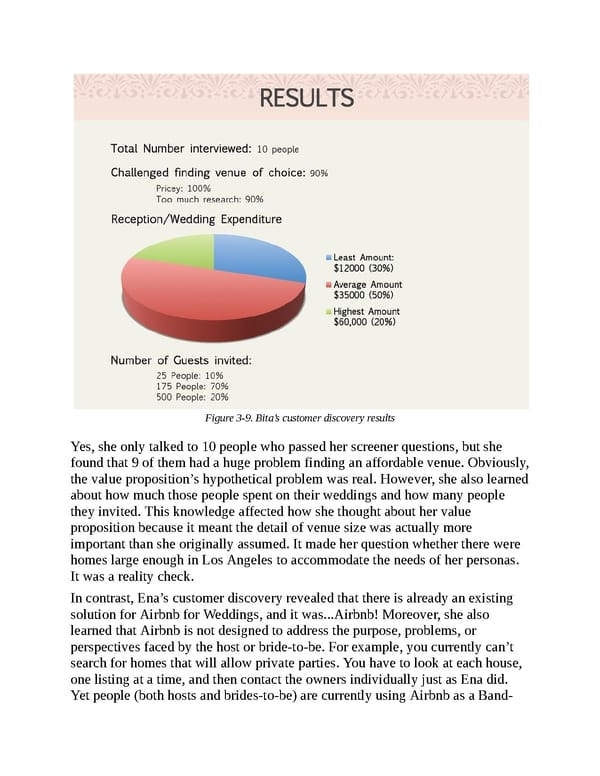Figure 3-9. Bita’s customer discovery results Yes, she only talked to 10 people who passed her screener questions, but she found that 9 of them had a huge problem finding an affordable venue. Obviously, the value proposition’s hypothetical problem was real. However, she also learned about how much those people spent on their weddings and how many people they invited. This knowledge affected how she thought about her value proposition because it meant the detail of venue size was actually more important than she originally assumed. It made her question whether there were homes large enough in Los Angeles to accommodate the needs of her personas. It was a reality check. In contrast, Ena’s customer discovery revealed that there is already an existing solution for Airbnb for Weddings, and it was...Airbnb! Moreover, she also learned that Airbnb is not designed to address the purpose, problems, or perspectives faced by the host or bride-to-be. For example, you currently can’t search for homes that will allow private parties. You have to look at each house, one listing at a time, and then contact the owners individually just as Ena did. Yet people (both hosts and brides-to-be) are currently using Airbnb as a Band-
 UX Strategy: How to Devise Innovative Digital Products that People Want Page 74 Page 76
UX Strategy: How to Devise Innovative Digital Products that People Want Page 74 Page 76